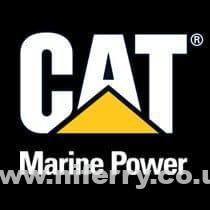Ulysses Fast Facts
| Current Name: Ulysses | Previous Names: Ulysses has always been known by her current name |
| Shipyard: Aker Finnyards Oy, Rauma [FI] #429, | IMO Number: 9214991 |
| Current Operator: Irish Ferries | Current Route: Dublin [IE] - Holyhead [UK] |
| Length Overall: | Beam: |
| Passenger Capacity: 1,875 | Vehicle Capacity: 4,076 lane metres of freight (approx. 240 freight units) OR 1,342 cars OR a combination of both |
| Tonnage: 50,938 | Sister-ships: N/A |
Table of contents
Ulysses: Design and Construction
Irish Ferries’
The IR£80m (€100m) order for an even bigger vessel was a direct response to a huge increase in growth in freight traffic between Ireland and the
The new vessel would be complemented by the fast-craft JONATHAN SWIFT, which had been introduced to the route just days earlier. ISLE OF INNISFREE and ISLE OF INISHMORE had both been ordered from the Dutch shipyard Van de Giessen de Noord, but for ULYSSES Irish Continental Group opted for the Finnish shipyard of Aker Finnyards instead. This was in part due to Aker already having a design concept (Cruise Ferry 4000) that met the capacity needs of Irish Ferries but could also be optimised for the Dublin to Holyhead route.
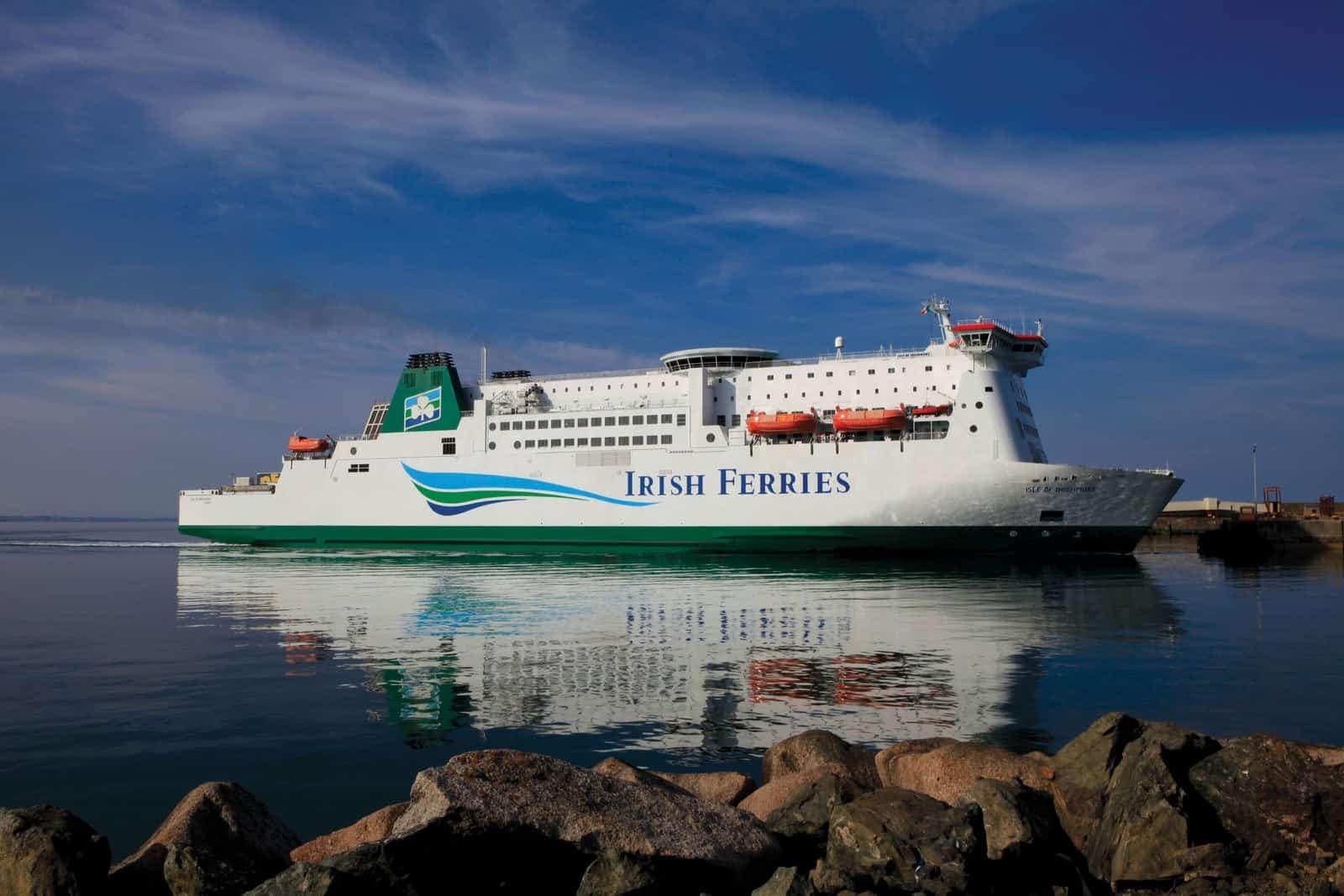
A First for Freight Capability
The as yet unnamed ferry was to be the first to incorporate four full-height freight decks allowing her to carry an impressive 4,100 lane metres of freight, around twice the amount of the ISLE OF INISHMORE. The fourth freight deck was born out of necessity as the new vessel would have to fit the constraints of Dublin Port.
Irish Ferries had set their sights on doubling freight capacity while still only using the one ship in order to achieve greater economies of scale. At the time of her introduction, ULYSSES was the largest ferry in the world in terms of lane metre capacity and deadweight.
Innovation
The solution arrived at by the design team at Rauma involved tapering the superstructure of the vessel to compensate for having the weight of a freight deck so high up the vessel. This is known as “tumblehome” in naval architecture.
When delivered the ULYSSES would physically be one of the largest in the world (SILJA SYMPHONY was slightly shorter in length but of greater gross tonnage), and would also have the largest theoretical car capacity – some 1,342 cars when a mezzanine deck consisting of six individual panels is deployed on the top freight deck. Only the upper freight deck is fitted with these panels to form a mezzanine car deck.
The mezzanine is accessed from the bow via a curved fixed ramp on the port side from the entrance to the main deck – an innovation at the time but one which has been used on subsequent vessels. A similar ramp is also used at the stern of the vessel, also positioned on the port side. This speeds up loading and unloading and also puts the majority of car passengers closer to the passenger accommodation.

Passenger Facilities
Despite the motivation behind ordering the new vessel being based around moving more freight, ULYSSES would not compromise on passenger facilities with the usual lounges, restaurants, a twin screen cinema, dedicated freight drivers lounge, passenger cabins, and even a 487 person capacity traditional Irish pub.
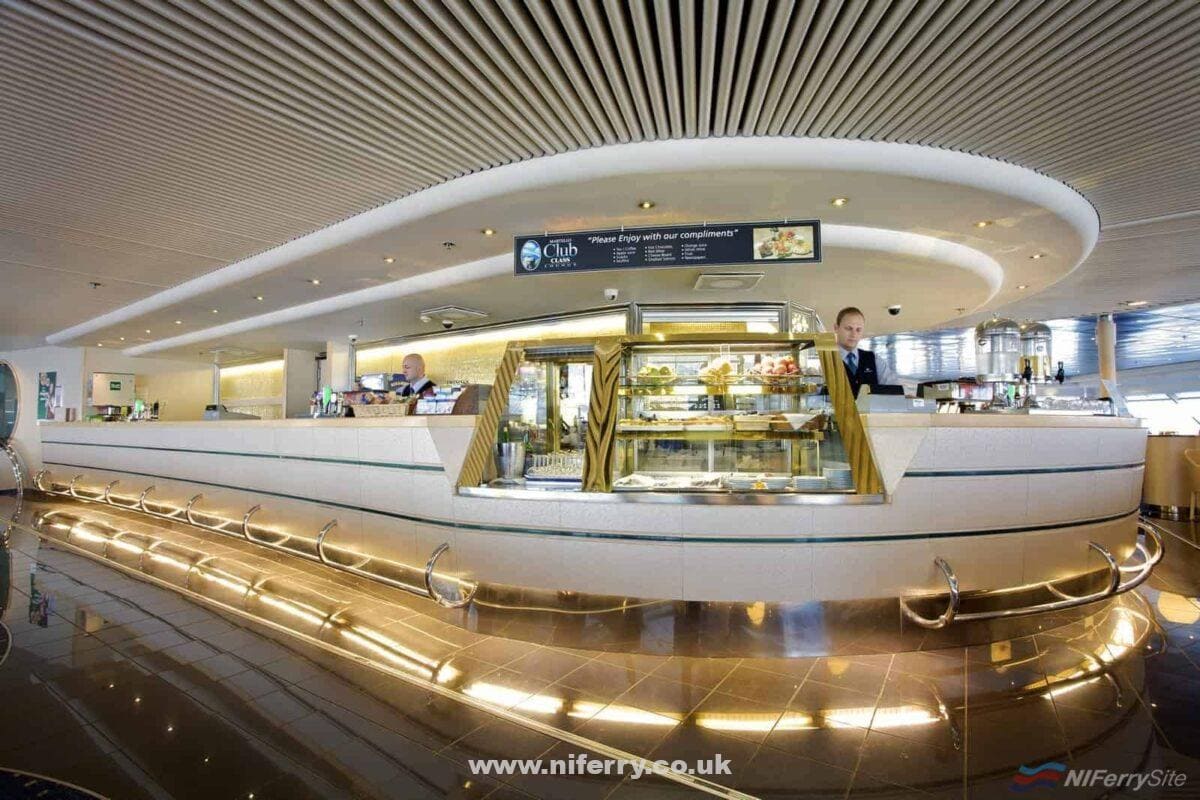
Why Ulysses?
The name Ulysses was chosen via an earlier public competition, winning due to both being the name of a famous novel about Dublin by James Joyce as well as also being the latin name for the hero of Greek mythology, the Greek king Odysseus who was cursed by Poseidon to wander the seas for ten years.
As the James Joyce novel chronicled a day in the life of Leopold Bloom in the city of Dublin, it was decided to theme the passenger areas of the new ship around the novel.
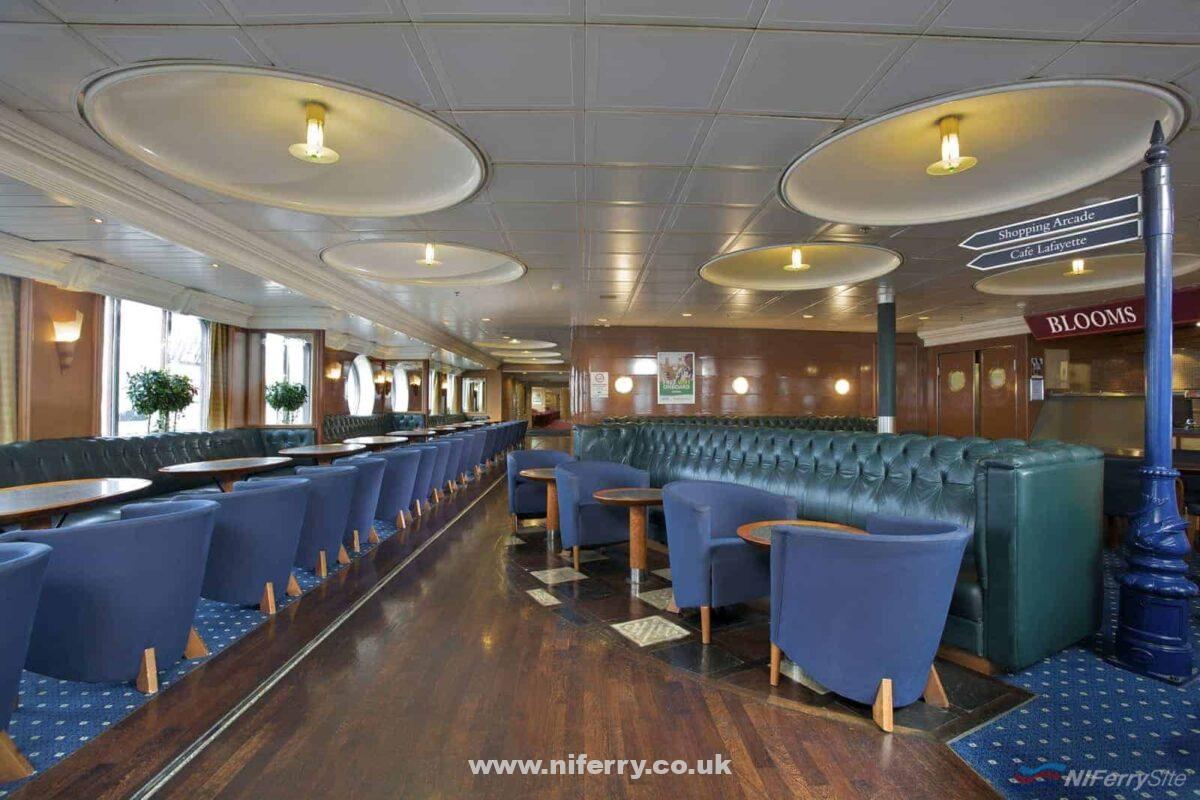
Arrival and entry into service
ULYSSES‘ first arrival in Dublin Bay was at 07:00 on Sunday 4th March following a six-day voyage from Finland. She then made her way into her home port for the first time around midday.
Following a period of crew training and familiarisation, drills, and berthing trials the new vessel was blessed and named on the 21st of March. She then entered service two days later with a 12:15 departure from Dublin to Holyhead. ULYSSES has remained on the same route ever since, only straying for refits and dry docking.
Reliability
Until 2018 it could be claimed that ULYSSES had never missed a sailing, whatever the weather. This was in no small part to the high specification of her machinery and the fact she was designed specifically for the Holyhead to Dublin route (despite being based on an Aker concept design). This resulted in her becoming known as one of the most reliable ferries in the world.
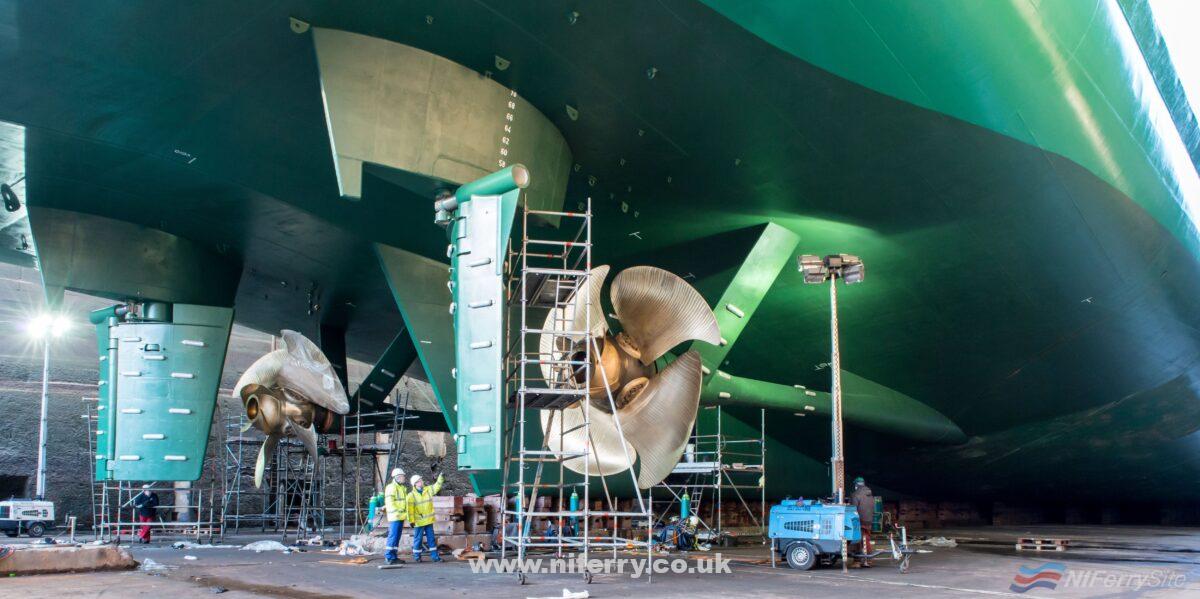
This remarkable reliability made her even more popular with freight customers, who depend on the ferry running to be able to meet their own customers’ deadlines. During December 2013 ULYSSES was joined on her route by the chartered Visentini Ropax EPSILON on weekdays, to further increase freight capacity on the Holyhead route – even ULYSSES had been outgrown by the market.
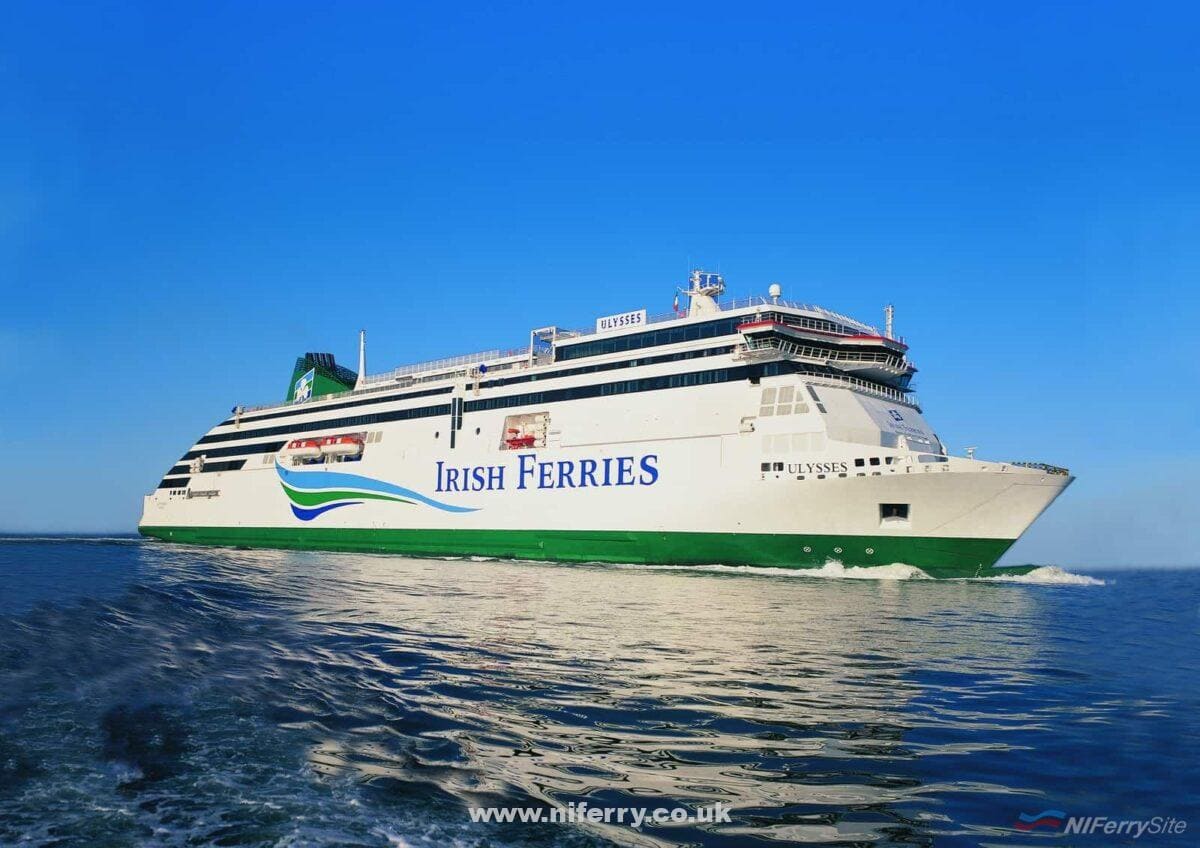
It had been expected that newly constructed RoPax W.B. YEATS would replace EPSILON on the Autumn/Winter schedule from 2018 to release the latter for a week-round Dublin to Cherbourg service. However, delays to the delivery meant that OSCAR WILDE filled in as
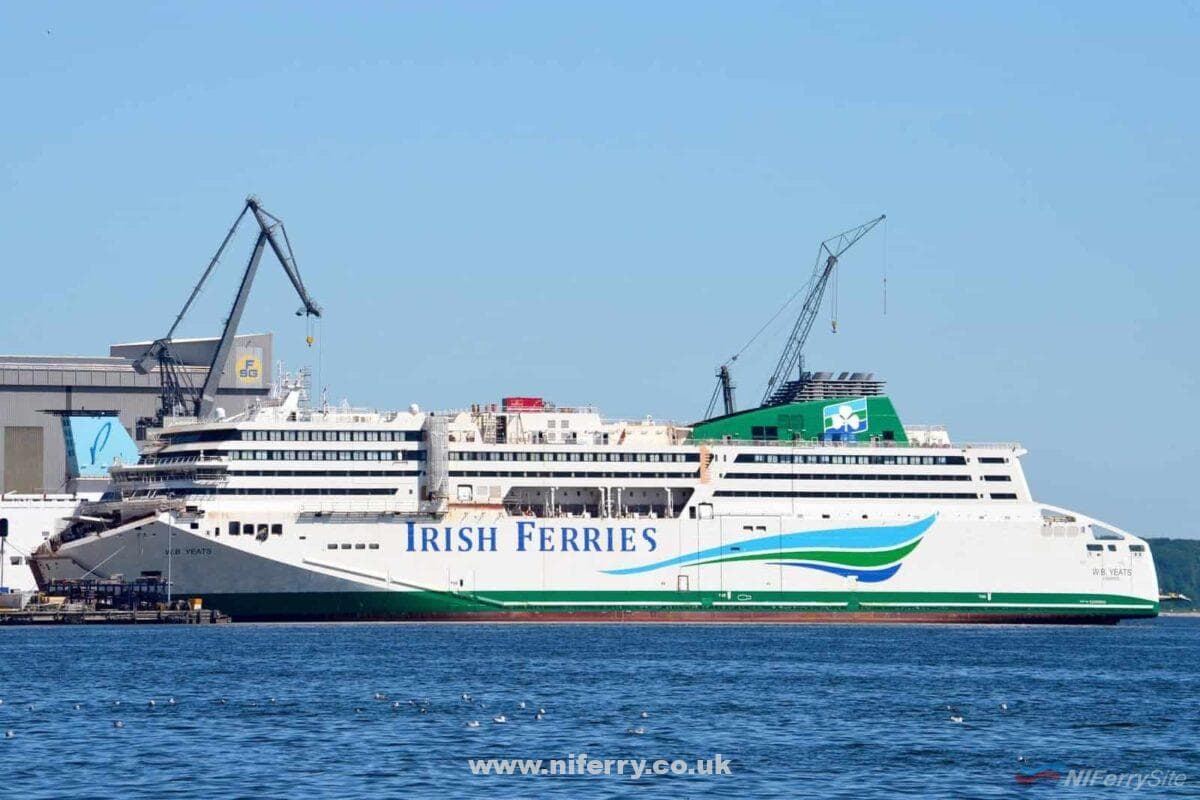
Most recent Belfast visit
ULYSSES‘ 17th year of service proved more challenging than others because of technical problems plaguing the vessel and forcing her to be cancelled on several occasions. Her reputation as one of the most reliable ferries in the world was challenged in 2018, with rudder problems leading to the cancellation of a number of sailings early in the year.
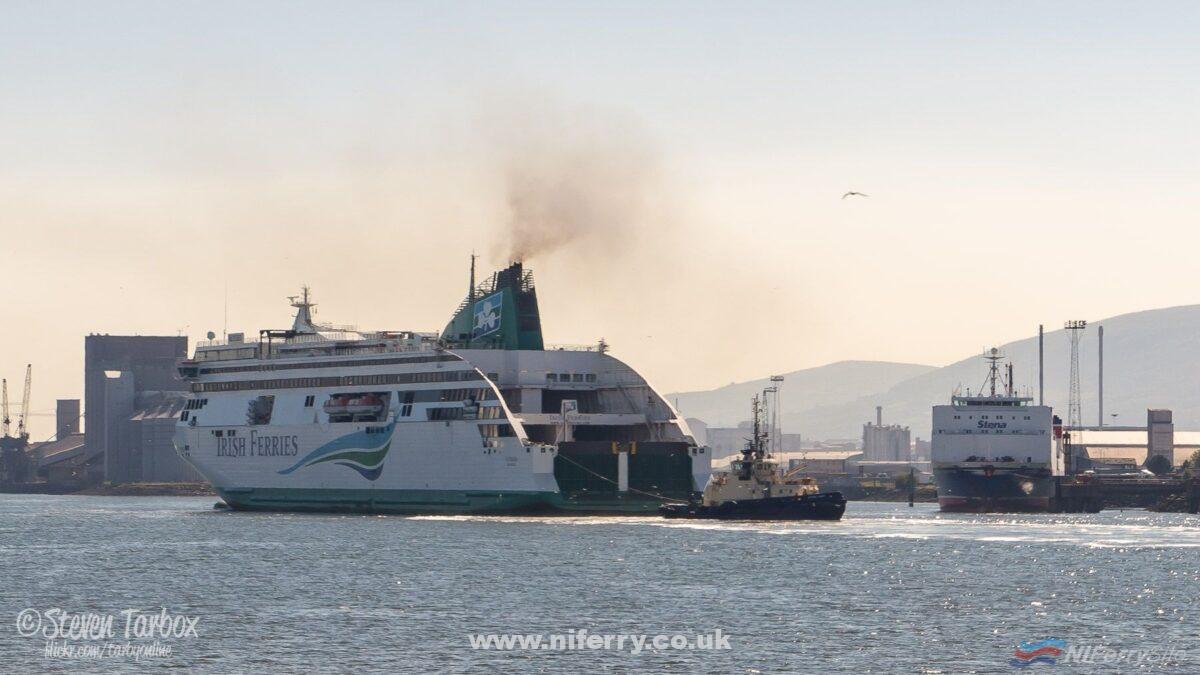
In late-June following a period of a few days operating at reduced speed, ULYSSES made her way to Belfast Lough, arriving at around 11 pm on 26/06/2018 to anchor off Bangor. During the afternoon of 28/06/18, she left the anchorage for Harland & Wolff, arriving in Belfast Dry Dock at around 5 pm for what was understood to be a replacement propeller shaft and repairs to her starboard controllable pitch propeller.
However, her departure was delayed after the discovery of further technical issues, with ULYSSES remaining in Belfast Dry Dock for most of the month of July 2018.
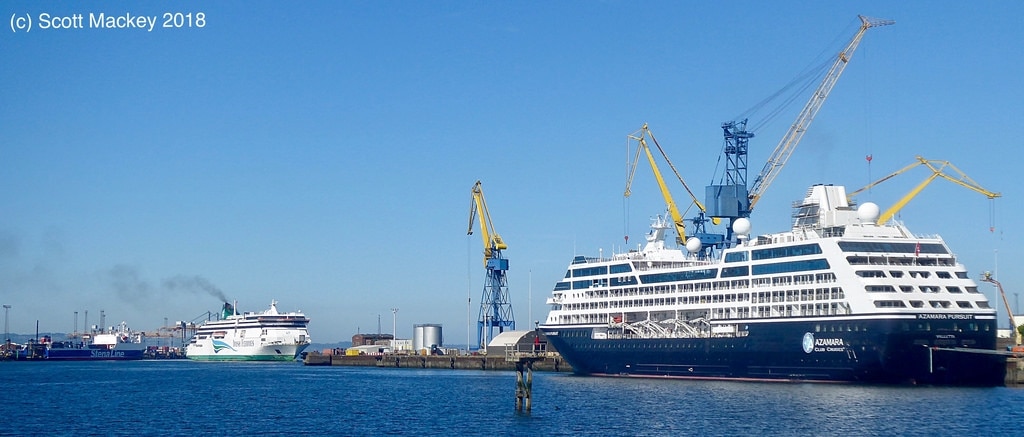
€4m 2019 Refit
During January 2019 ULYSSES went for another dry docking, though this time at Cammell-Laird Birkenhead. She returned to the Dublin – Holyhead route four weeks later on February 13th. In addition to the normal hull cleaning, painting, and general maintenance the significant €4m investment also included new propellers , new rudder components, a full refurbishment of her stern thruster, engine overhauls and vehicle deck repainting.
ULYSSES‘ new propellers are similar to those fitted to W.B. YEATS from new. In addition to an optimised blade design incorporate rotating propeller caps. As a consequence, propeller resistance is decreased and thrust is increased thus making the vessel more efficient. Following this substantial investment, ULYSSES appeared to shake off the reliability problems which plagued her during 2018.
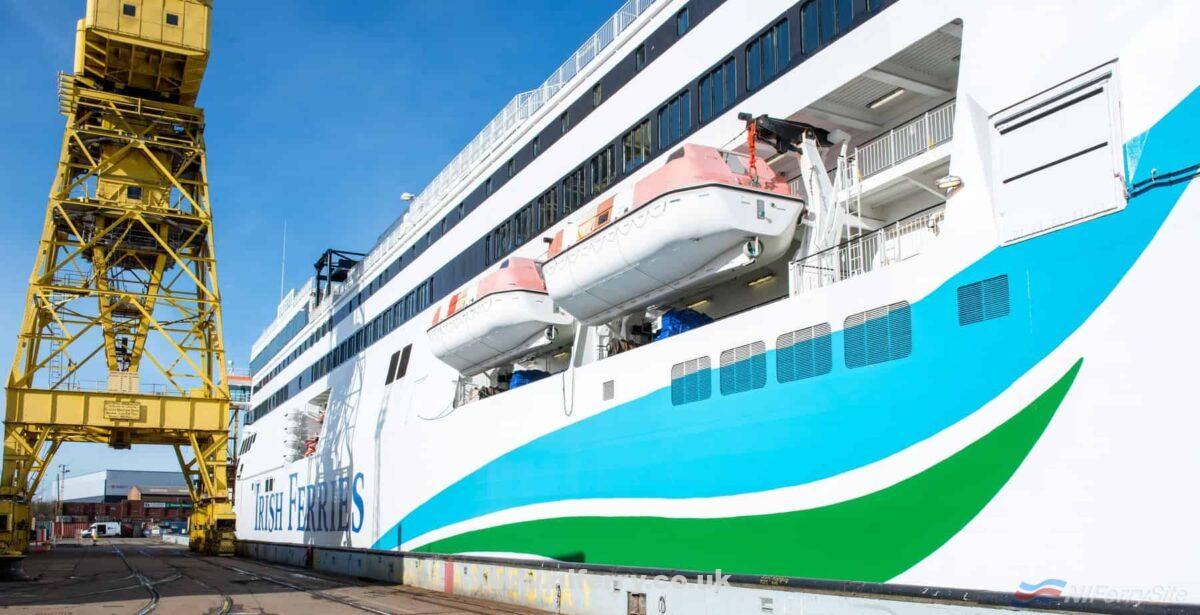
In early 2020, ULYSSES sailed to Poland for further upgrade work. The main focus of this lengthy maintenance period (which was originally expected to last about six weeks but overran significantly) was to retrofit Wärtislä-designed exhaust gas scrubbers.
This was part of a €25m project to fit scrubbers to both ULYSSES and ISLE OF INISHMORE in order to allow them to continue to burn conventional heavy fuel oils rather than reduced sulphur variants. However, installation of scrubbers on ISLE OF INISHMORE was delayed after ULYSSES‘ installation took longer than expected. In addition to allowing the ship to consume lower cost fuel oils, Irish Continental believe that using scrubbers reduces emissions further than the use of low sulphur fuel oil.
As of the start of March 2021, ISLE OF INISHMORE has yet to be fitted with her scrubbers.
Replacement
On the January
Following in the footsteps of her predecessor, the new vessel was to be the largest in the world in terms of vehicle capacity. However, with some 5,610 lane metres of freight space, more than most Ro-Ro vessels, she would have been able to accommodate 330 freight units per sailing. This would have been an increase of 50% compared to ULYSSES, but financial problems at the shipyard eventually led to the ship being cancelled.
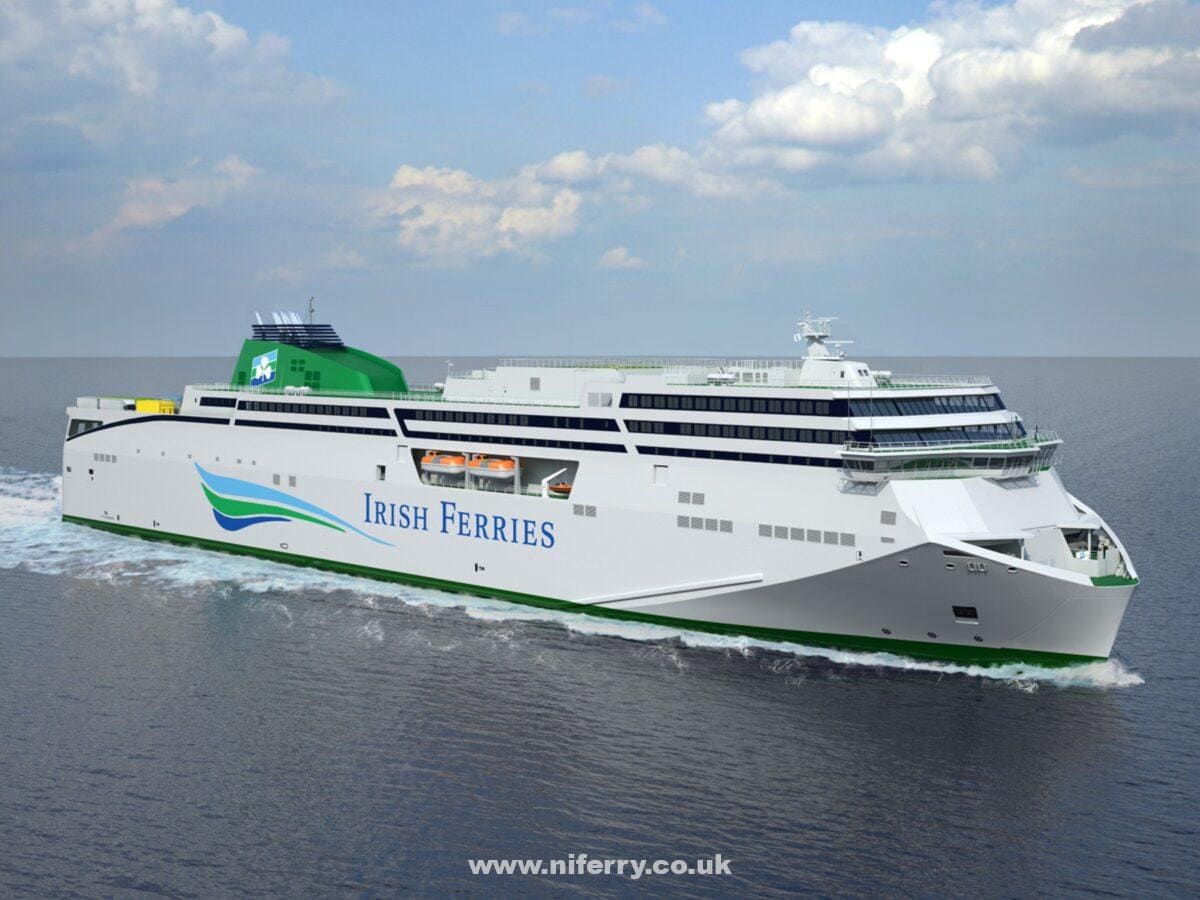
In addition to 5 full-height freight decks (versus ULYSSES‘ 4) the new 67,300gt (approx) vessel would have had passenger facilities spread out over 3 decks including a dedicated cabin deck.
Further information on the now cancelled new Irish Ferries FSG-built Dublin – Holyhead ferry can be found here. Rumours of a similar ship being ordered from a different yard have so far come to nothing.
Trivia
- ULYSSES won the Lloyds List Cruise and Ferry 2001 award for ‘Most Significant Newbuild – Ferry’.
- ULYSSES has often been promoted as the ‘largest car ferry in the world’, however this is based on her purely theoretical car capacity if no other vehicles are carried. Even before ULYSSES was launched she was far eclipsed in terms of physical size by vessels such as the 13 deck high 58,376gt SILJA SYMPHONY which entered service a decade before. ULYSSES is currently the 5th largest ferry (in terms of tonnage) serving the British Isles, behind Stena Line’s STENA BRITANNICA / STENA HOLLANDICA (currently the longest ferries in Europe along with STENA GERMANICA and STENA SCANDINAVIA) and P&O Ferries PRIDE OF HULL / PRIDE OF ROTTERDAM. The current largest ferry in the world in terms of tonnage is the 223m long COLOR MAGIC, which coincidentally replaced KRONPRINS HARALD (iii) – the vessel which later became Irish Ferries’ OSCAR WILDE before she was sold in 2019, becoming GNV ALLEGRA.
- By the time ULYSSES was ordered, interior designer Claus Horn had entered semi-retirement. He did, however, retain Irish Ferries as a client and employed his daughter Camilla to work on the ULYSSES and JONATHAN SWIFT projects with him. Camilla Horn would later lead the interior design team for Irish Ferries next new-build, W.B. YEATS.
- W.B. YEATS uses the same type of engines, the MaK M43, as ULYSSES albeit in their modern 8-cylinder rather than 9-cylinder guise. This is despite being delivered almost two decades after ULYSSES was ordered. Stena RoRo has also specified this engine type as the main power plant for their E-Flexer class. The reliability of the MaK M43 and its need for little maintenance were factors in its selection for both Irish Ferries and Stena RoRo. The cancelled vessel which had been intended tp displace ULYSSES, FSG hull 777, was not specified with these engines, however.
Technical information
|
Name |
|
|
IMO Number |
9214991 |
|
MMSI number |
209952000 |
|
Ordered |
08/07/1999 |
|
Owner |
|
|
Design |
|
|
Building Yard |
|
|
Original Fit-out |
SBA Marine, Finland KAEFER Eristystekniikka Oy, Finland Naval Interior Team (NIT), Finland |
|
Construction Cost |
€100m (IR£80m) |
|
Hull Number |
429 |
|
Keel Laid |
24.01.2000 |
|
Launched |
01.09.2000 (floated out) |
|
Year Completed |
27.02.2001 |
|
Delivery date |
28.02.2001 |
|
In service |
23.03.2001 |
|
Interior design (original) |
Claus & Camilla Horn (Denmark) |
|
Current Call Sign |
C4HP2 (previously EICB until Jan 2006) |
|
Classification |
Lloyds Register of Shipping LR + 100 A1, Ice Class 1A, Roll on/Roll off Cargo & Passenger Ship + LMC, UMS, NAV1, IBS, SCM, IWS |
|
Length overall (between perpendiculars) |
209.2m (192.4m) |
|
Beam |
31.84m |
|
Moulded Depth |
15.75m |
|
Draught |
6.4 (6.6m scantling) |
|
Gross Tonnage |
50,938gt |
|
Dead-weight |
10,722 (6.6m draught) 9.665 (6.4m draught) |
|
Total number of decks |
12 |
|
Passenger decks |
3 (decks 9, 10, and 11) |
|
Vehicle decks |
5* (*assuming the mezzanine panels are deployed on deck 7 to form deck 8) |
|
Machinery |
|
|
Max Power |
31,200kW |
|
Service speed |
22kts @ 85% MCR |
|
Consumption |
Approx. 70 tonnes per 24hrs operation on the Dublin to Holyhead route |
|
Current Passenger Capacity |
1,875 |
|
Passenger Cabin Berths |
228 |
|
Current Vehicle Capacity |
4.076 lane metres |
|
Crew |
125 (83 crew cabins are provided totalling 121 berths) |
|
Onboard Facilities in use |
|
|
Home Port / Flag |
Dublin / Ireland (until 2006) |
Deck plan
Click the image below to enlarge
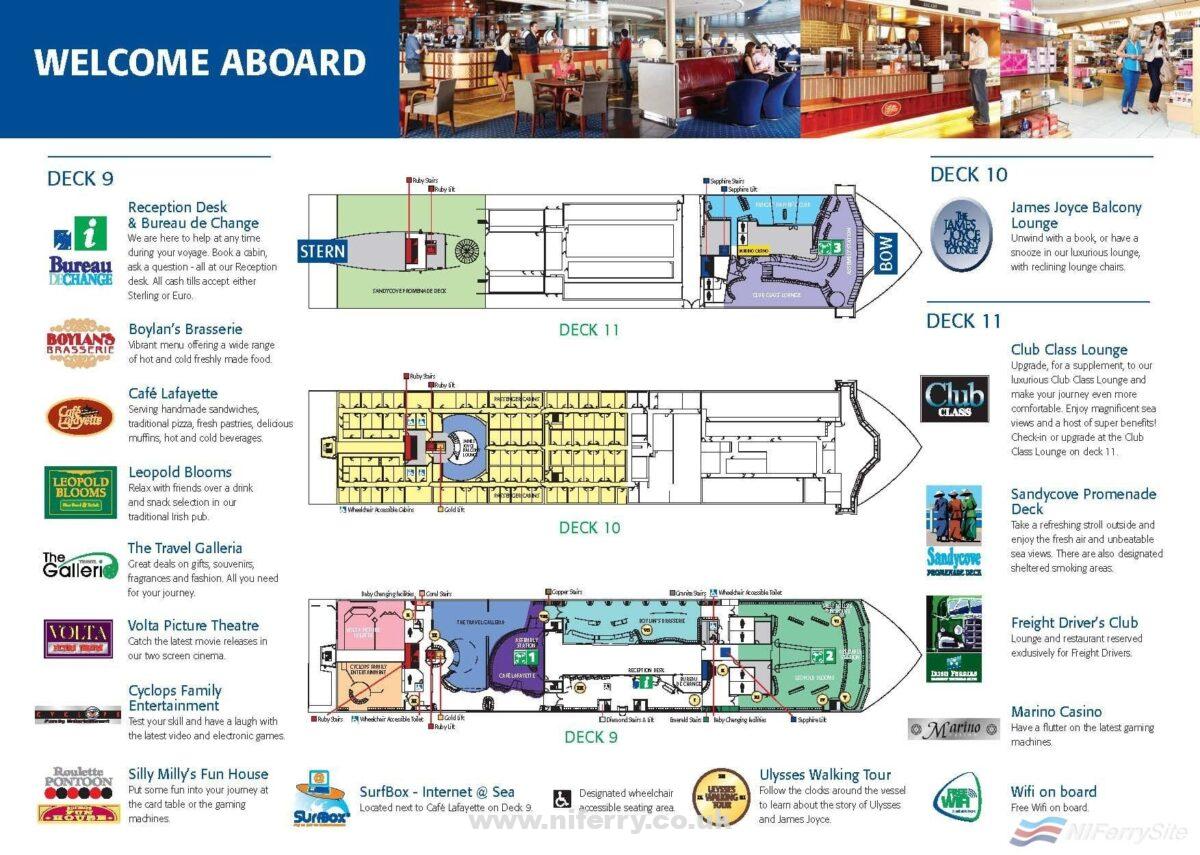
Photo Gallery
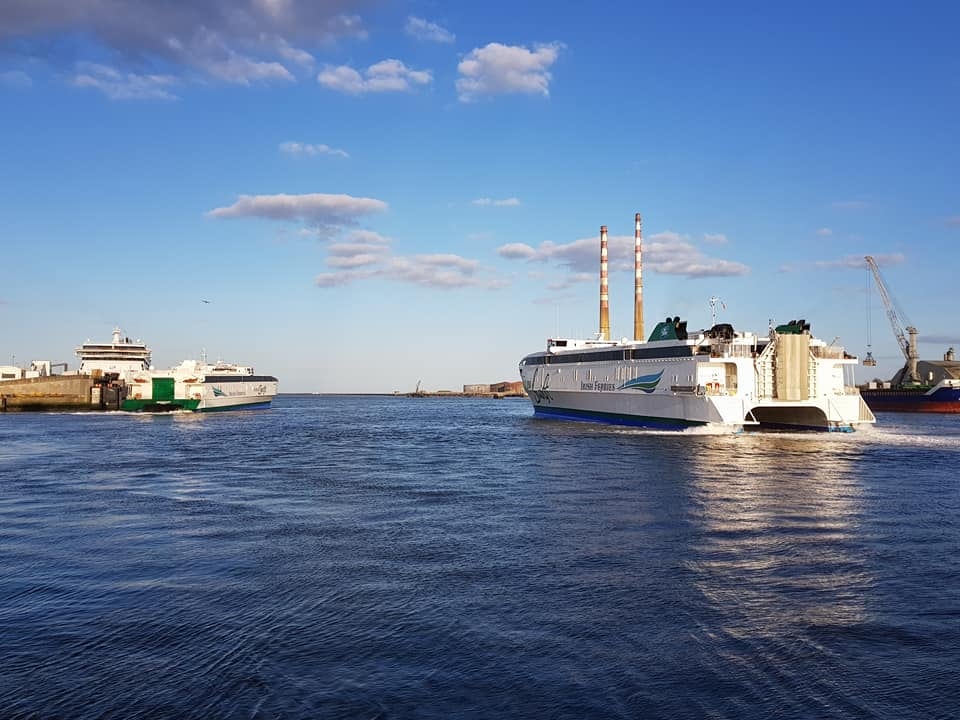
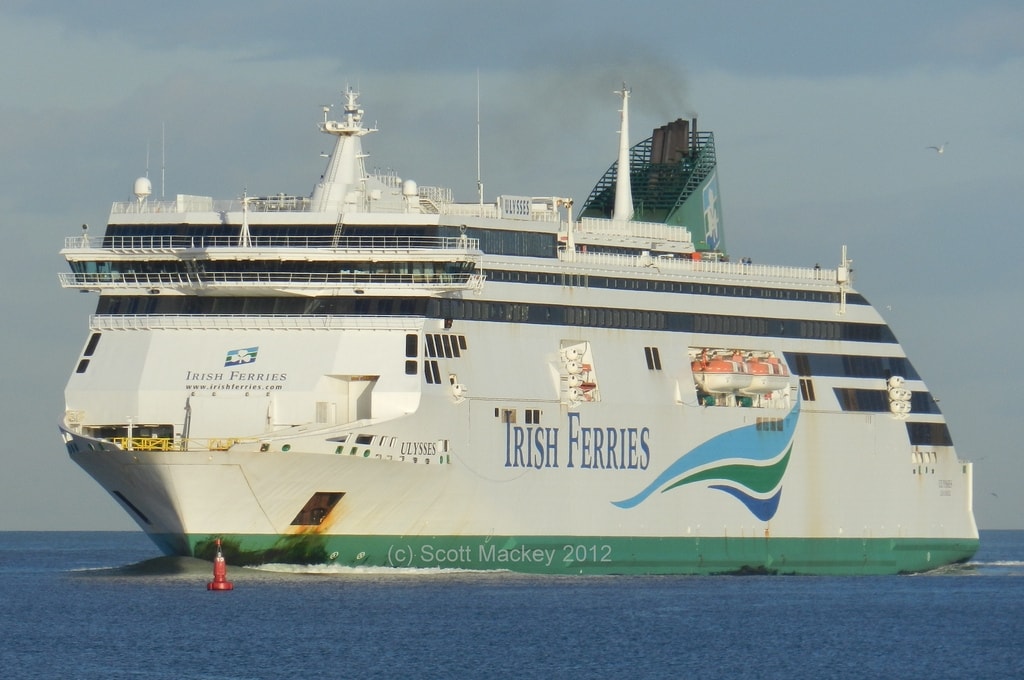
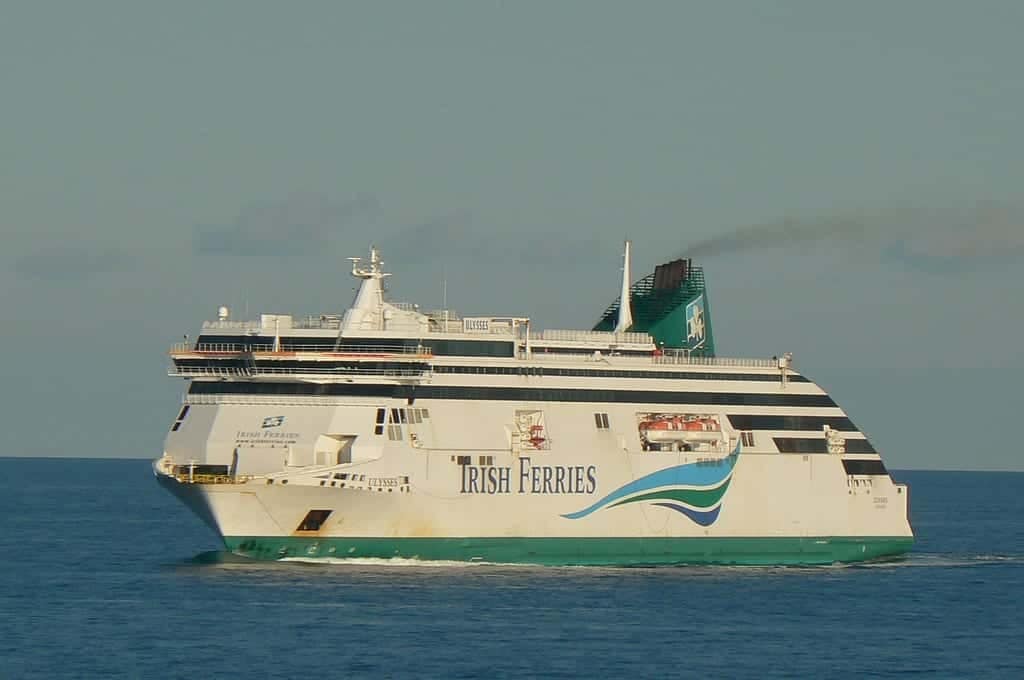
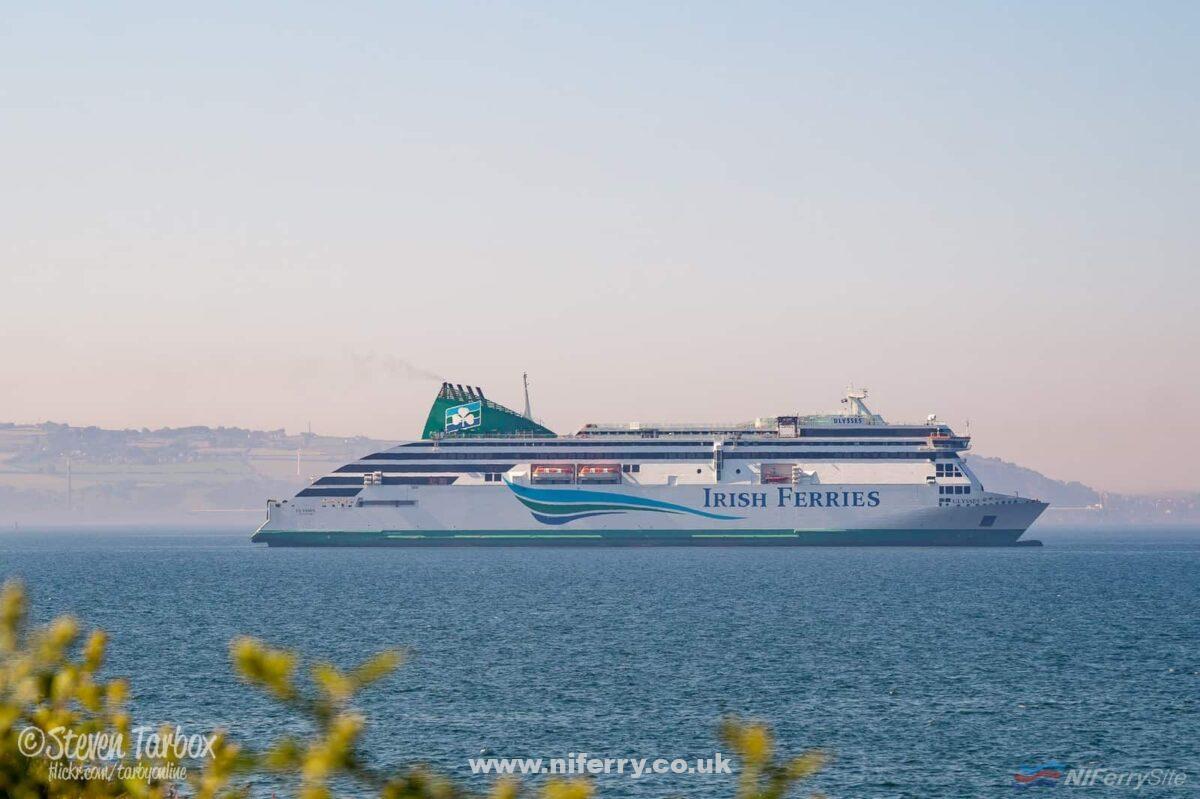

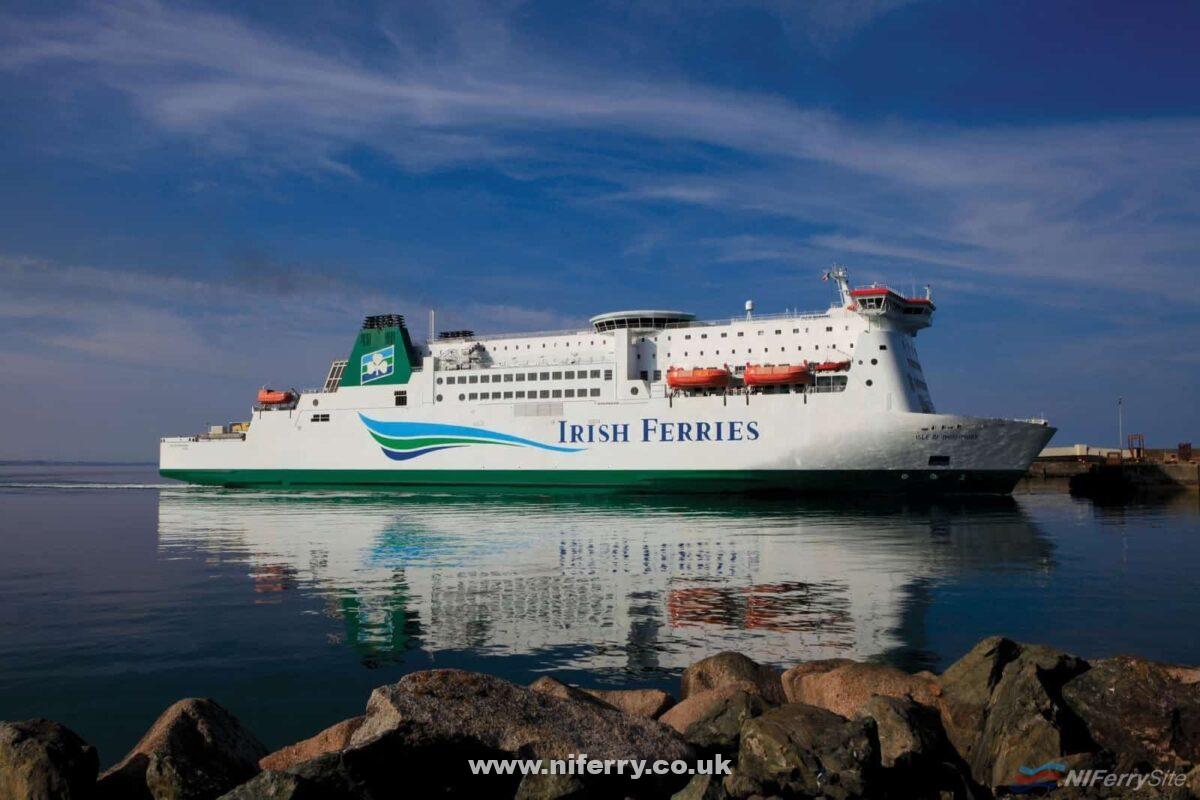



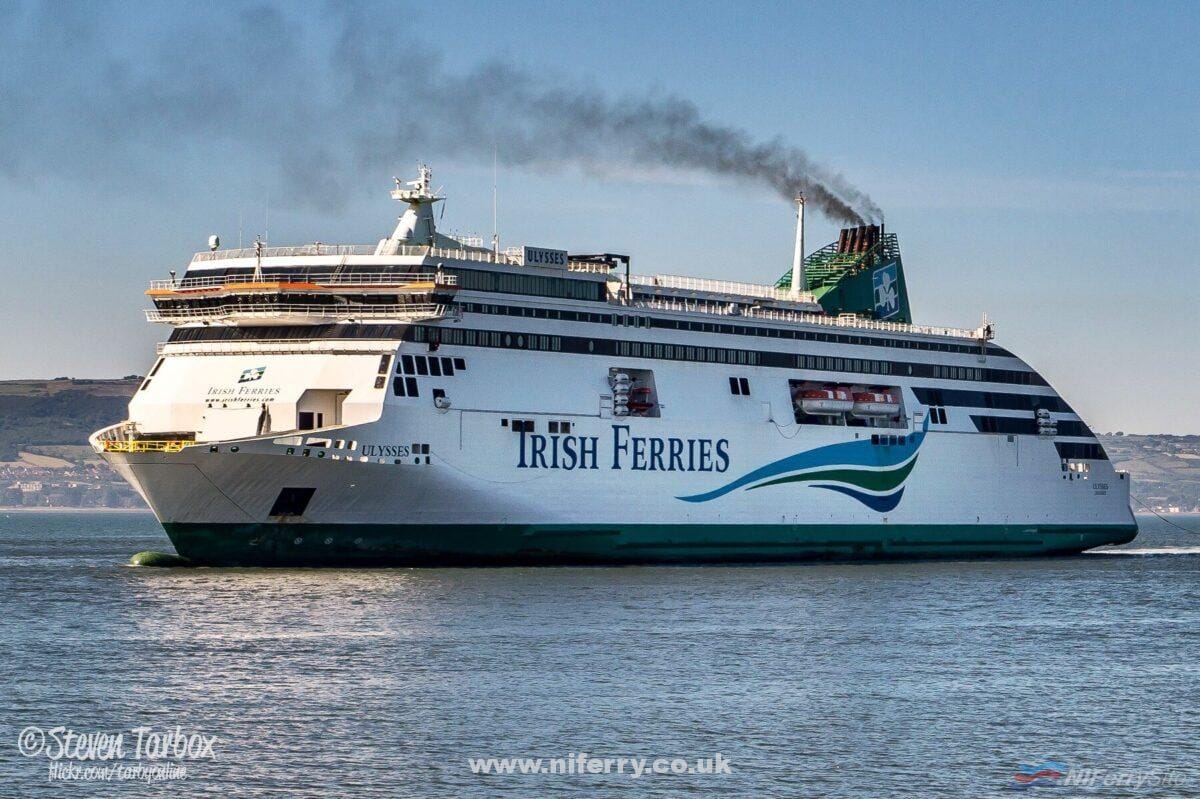



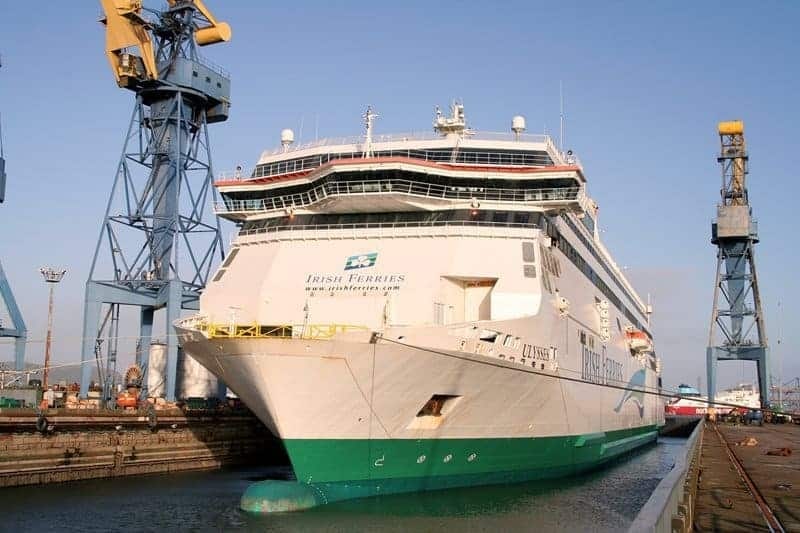

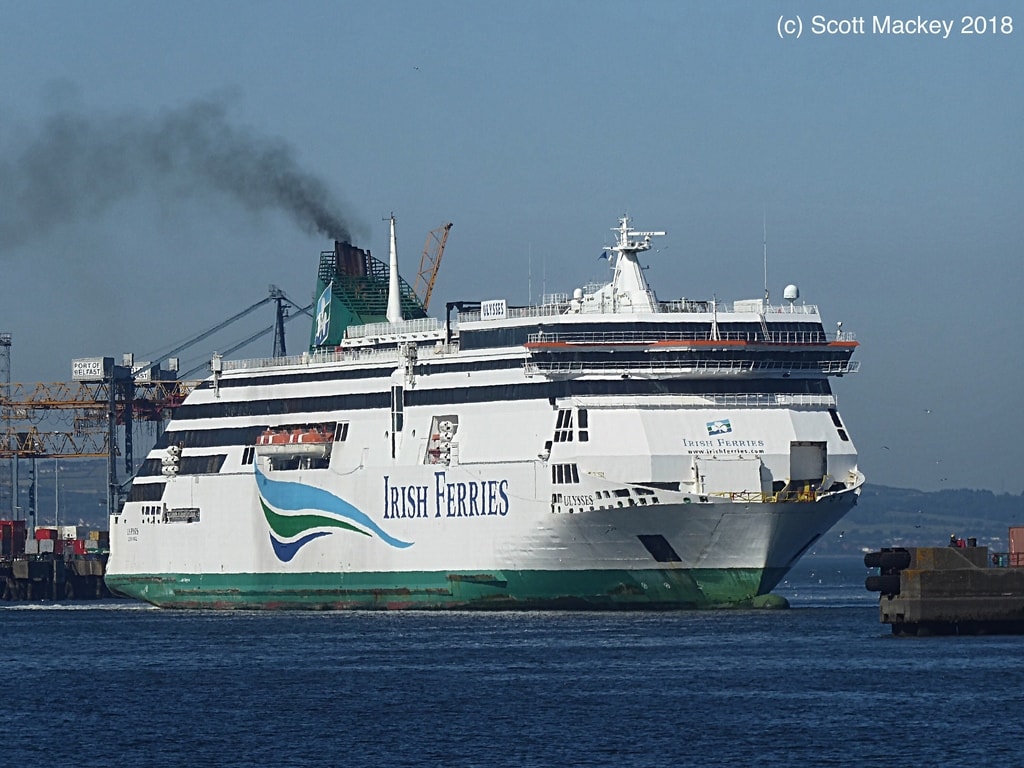


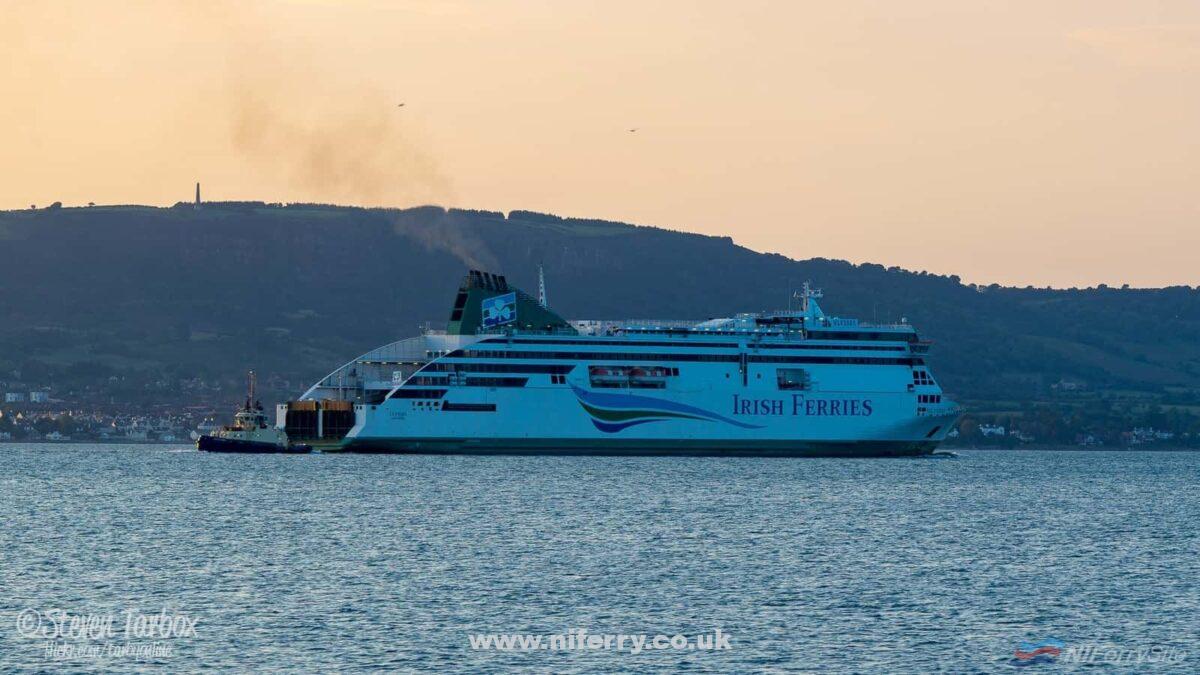
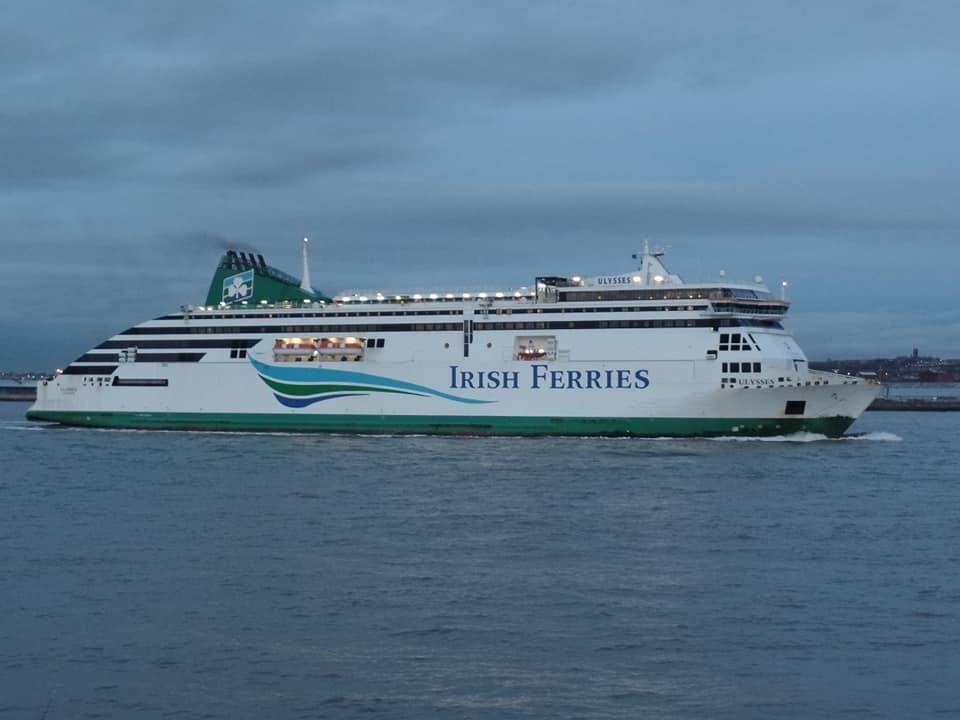
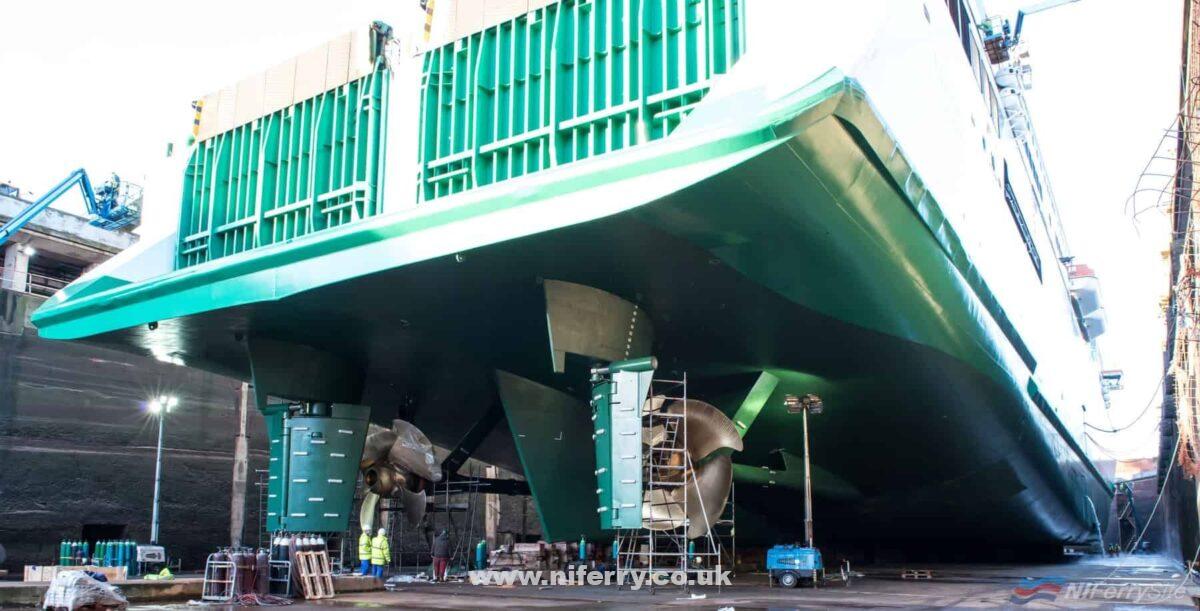


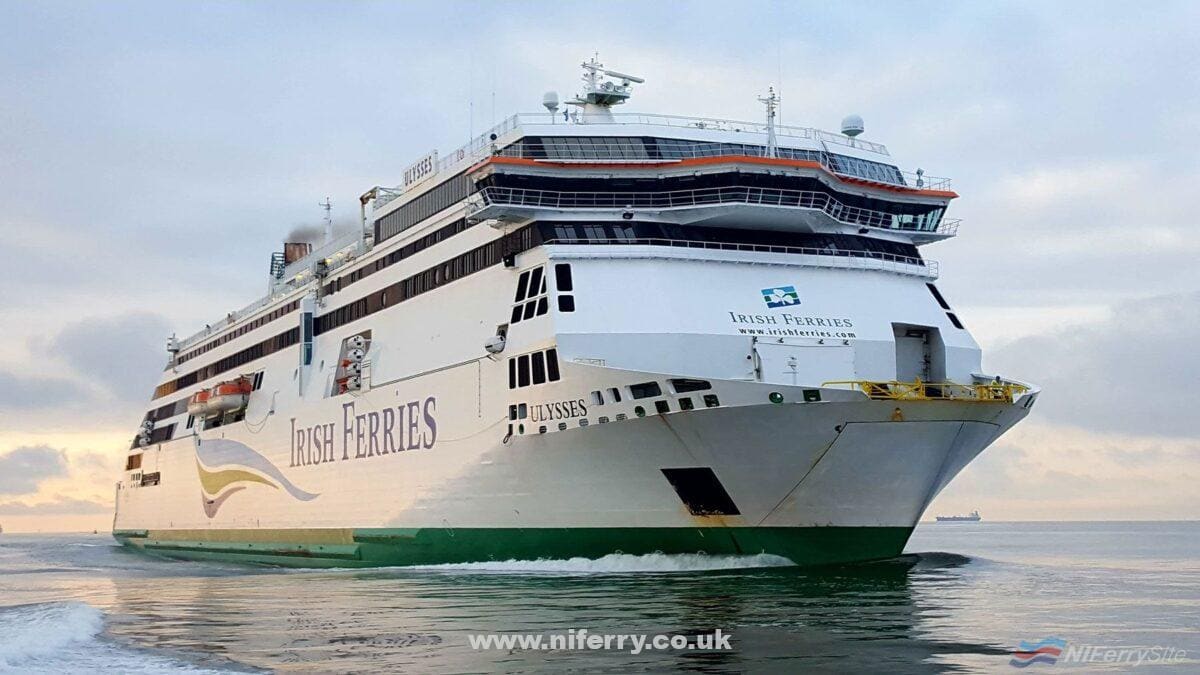
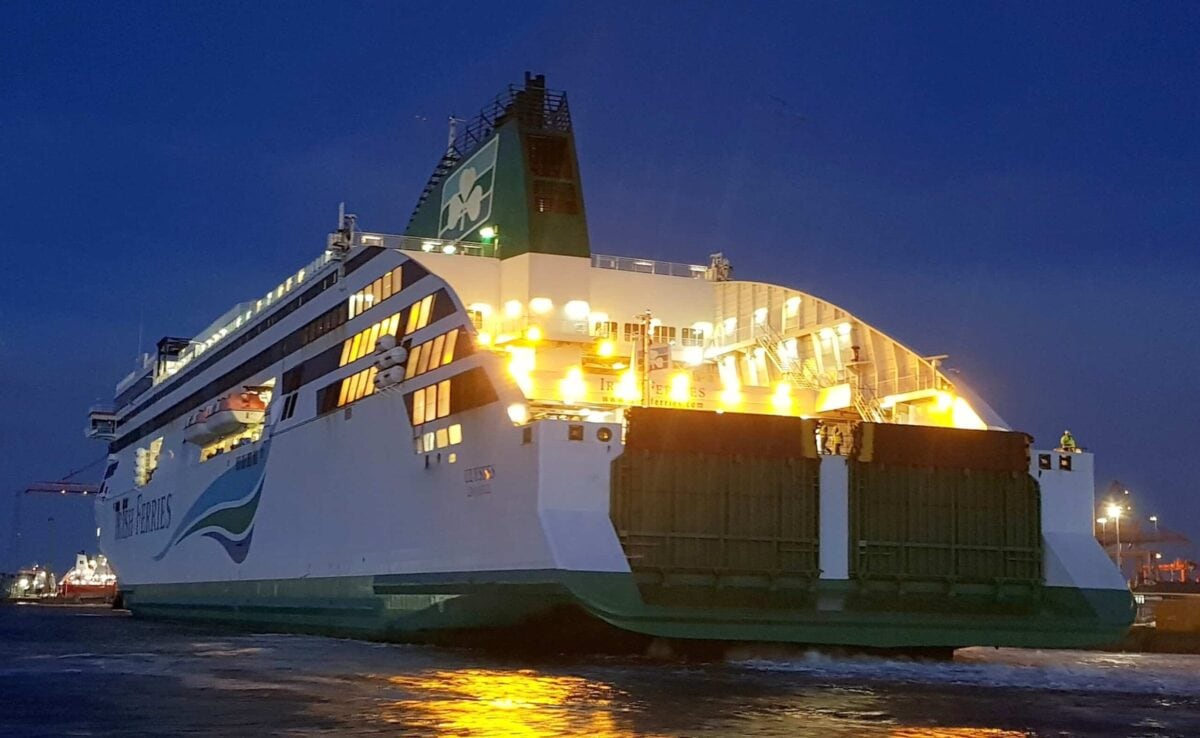
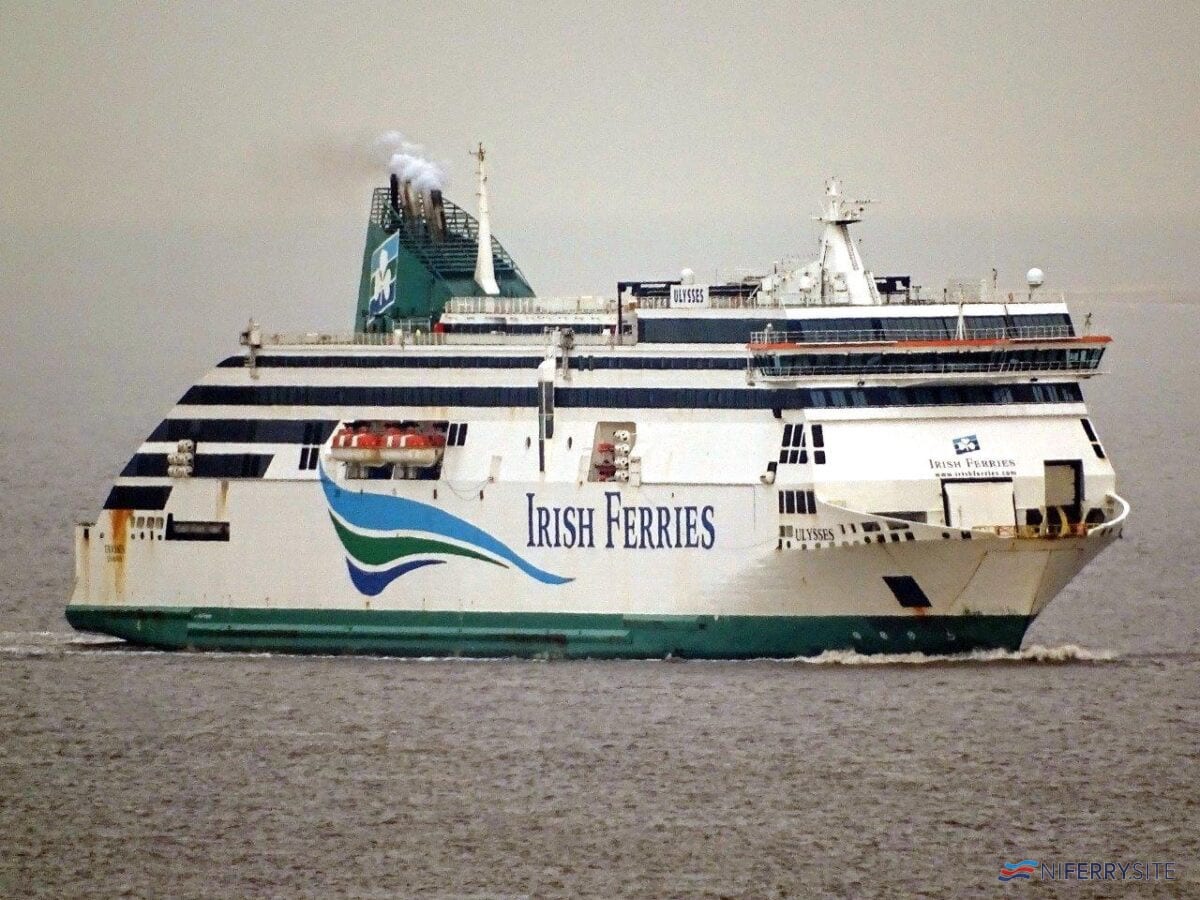
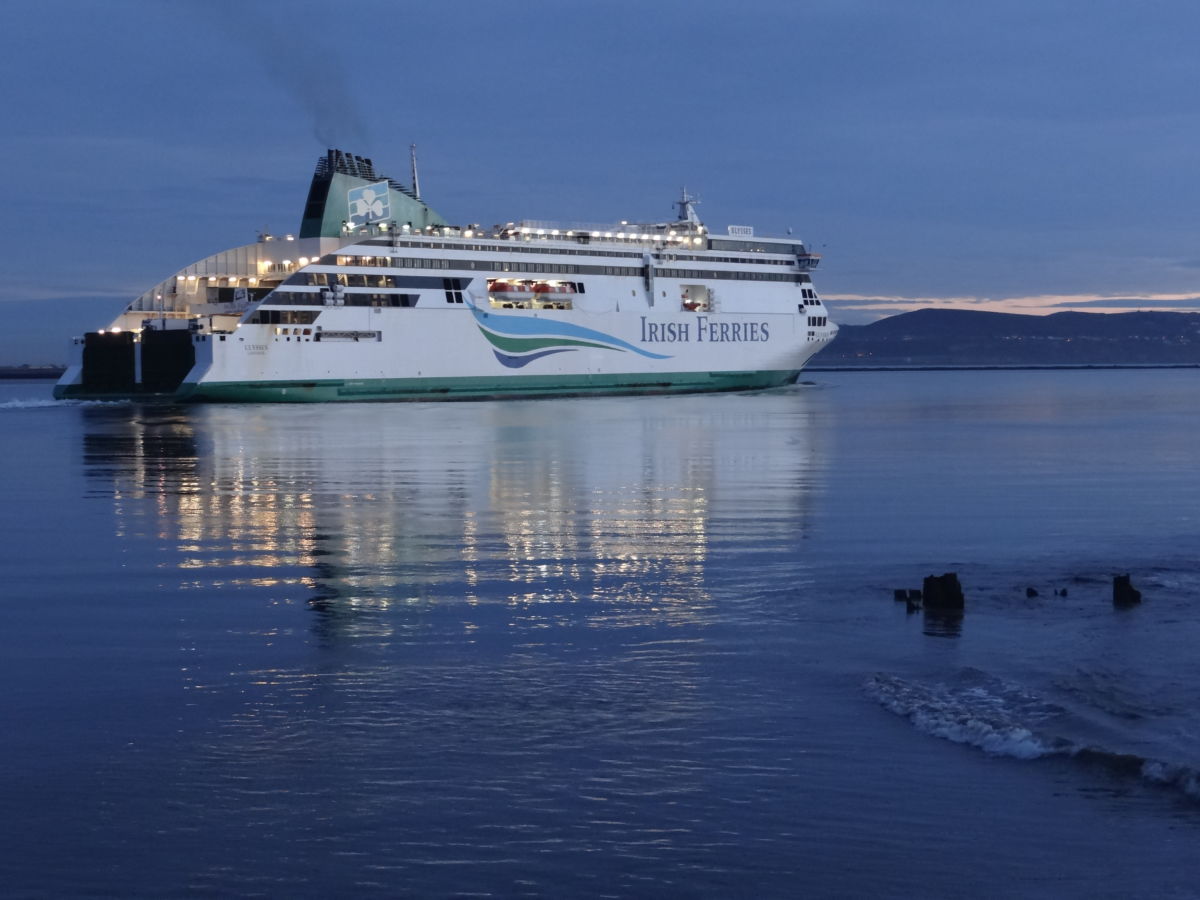
References
Internet Sources
- https://www.kaefer.com/Binaries/Binary153/K-WERT-No.20-GB.pdf
- https://magazines.marinelink.com/Magazines/MaritimeReporter/200101/page/10
- http://www.motorship.com/news101/industry-news/irish-ferries-for-finnish-yard
- https://fairplay.ihs.com/ship-construction/article/4241741/ferry-design-construction-large-conventional-ferries
- https://www.ship-technology.com/projects/ulysses/
- https://www.irishferries.com/uk-en/ships/ulysses/
Books and other publications
The below links are affiliate links. If you follow one of these links and choose to make a purchase this website will receive a small commission at no extra cost to you. By purchasing through one of these links you are directly helping to keep this resource free for all.
- Id, K., & Peter, B. (2017). Innovation and Specialisation: The Story of Shipbuilding in Finland. Copenhagen: Nautilus Forlag.
- Cowsill, M., & Merrigan, J. (2013). Irish Ferries: An Ambitious Voyage.Ramsey: Ferry Publications trading as Lily Publications Ltd
- Brogren, Klas (Ed.) (2001). “ULYSSES“. Shippax Designs 01
The above article is Copyright ©, all rights reserved. Unauthorised reproduction or distribution is strictly prohibited. All images are Copyright © of the credited copyright holder unless explicitly stated otherwise.
Format Update: 14.01.19 (Prepared for 2019 format and converted to Gutenberg)
05.03.21 (Updated and made AMP-compatible)



